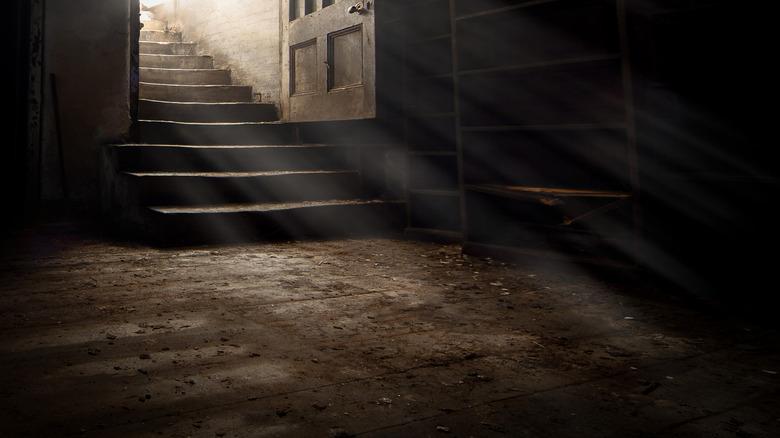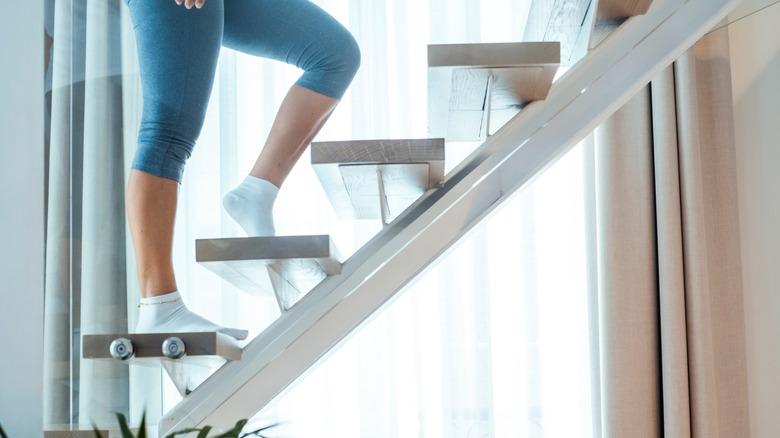What Are Death Stairs (& Do You Have Them In Your Home)?
We may receive a commission on purchases made from links.
Stairs don't need a huge push (pun intended) to be deathtraps, but some are unnecessarily dangerous, almost to the degree of being comical. These include the incredibly steep to the impossibly narrow. The handrail-less, the slippery, the rotting, the staircases to nowhere... These are affectionately referred to as "Death Stairs."
Death Stairs is a public Facebook group with over 600,000 members posting pictures of terrifying (and often baffling) staircases. Some were born as Death Stairs thanks to the architects, while others only became so later on because of owner neglect. Many of the photos posted in Death Stairs are taken by people caught off-guard on vacation in an Airbnb or old hotel. However, some are taken in people's homes, posted by the homeowners themselves — and they aren't limited to old Victorians, built before building codes were a thing. Death Stairs can even crop up in modern homes and new builds. Which begs the question: Does your home have Death Stairs? And if so, what can you do about it?
What makes stairs (and particularly Death Stairs) so dangerous?
According to The American Journal of Emergency Medicine, there are over 1 million stair-related injuries per year in the United States alone. And it's not only older people or young children – stair accidents can occur regardless of age or ability. We can assume many of these injuries did not occur on obvious "Death Stairs," but on well-built, up-to-code stairs. So what are common home safety hazards that make stairs dangerous, and how do they get worse when those stairs are Death Stairs?
Poor lighting is a big risk factor. If you can't see the steps, you can easily miss one or fail to see a tripping hazard left on the stairs — a problem made only worse if you do dangerous things like carry a laundry basket while descending the stairs, unable to see your feet. Slippery surfaces are a huge threat and can be caused by spills or cleaning products (indoor stairs) or rain, ice, and snow (outdoor stairs), or just certainly materials themselves. Wood stairs, for example, are known to be dangerously slippery if you don't have anti-slip treads on them, and if you combine slippery steps with a lack of handrail, much less a weird angle or an awkward height for the risers, you're definitely in Death Stairs territory. Meanwhile, even though carpeted stairs may seem safer, frayed carpeting and loose rugs are huge trip hazards, while worn carpeting can become dangerously slippery.
From there, once you allow existing problems to get worse and structural issues to decline, it's only a matter of time before a safe (or not super deadly) staircase devolves into your own personal set of Death Stairs.
How to make your Death Stairs into Life-Affirming Stairs
How can you keep the stairs in your home from becoming "Death Stairs?" It starts with stair design. All horizontal and vertical surfaces need to be uniform and should fit the standard size of stairs according to building codes. Mismatched or oddly shaped stairs are something you often see photographed within the Death Stairs community, and they should be avoided. Lighting in the stairwell also needs to be considered. We love that newer builds are adding lights directly onto each stair, which feels much safer than a shadowy overhead. And finally, you want a handrail on at least one side, and either a wall or handrail on the other. This should be fairly obvious, but from what we've seen in the Death Stairs group, it still needs to be said.
For those not designing a staircase from scratch, there are things you can add to your current stairs to improve safety. If you have hardwood stairs, but are constantly worried about kids slipping in their socked feet, consider adding a stair runner. Stair runners maintain the fresh look of hardwood while adding a decorative touch. They also reduce noise and provide traction, reducing the chance of slipping. If you are low on funds, you can purchase non-slip stair treads in a variety of colors to mimic the look of a runner and provide similar protection. If sticking with hardwood, make sure each step has nosing, which is a strip attached to the lip of each step that improves grip and visibility. Do these things, and you won't have to hold your breath on your own stairs ever again.


